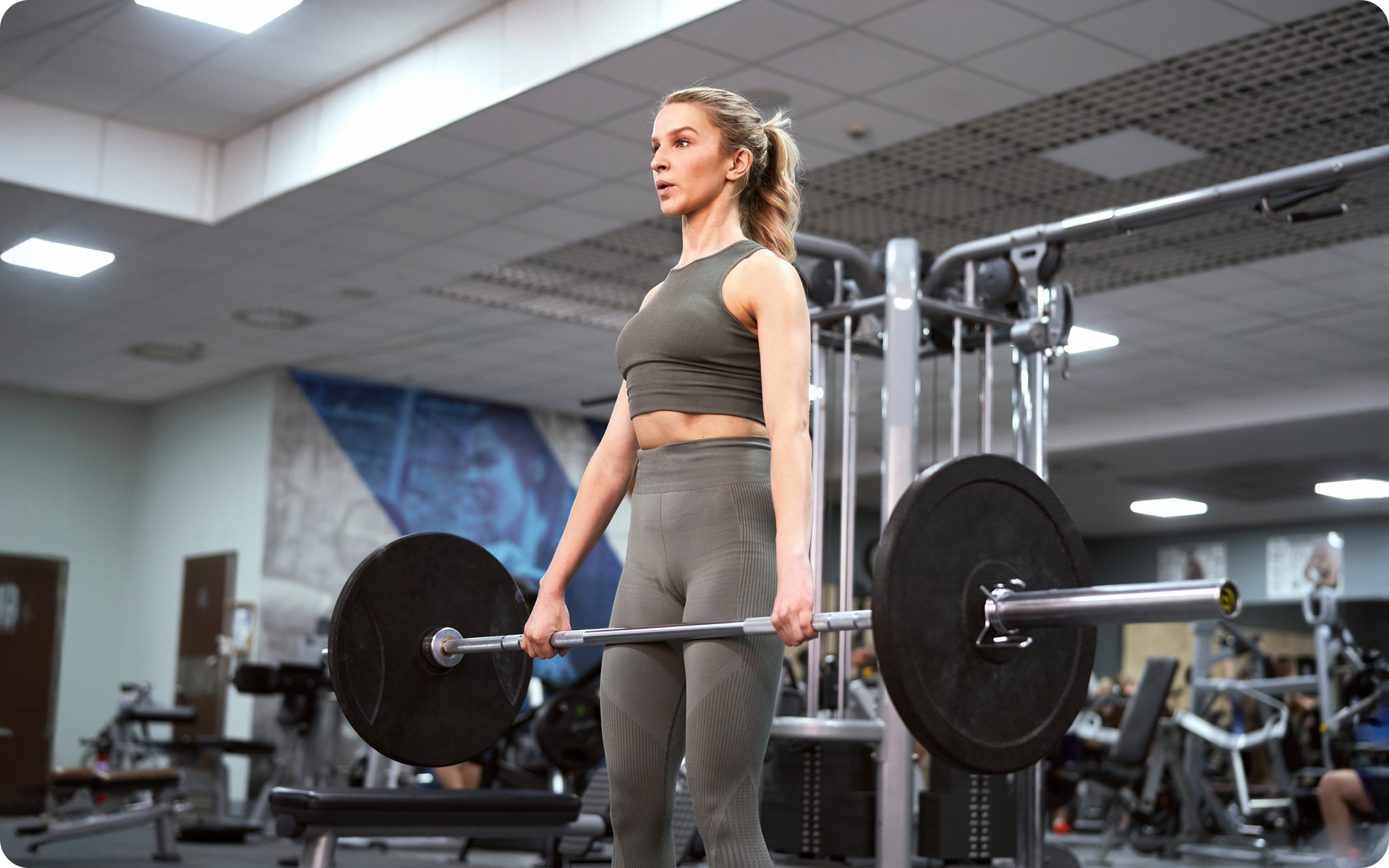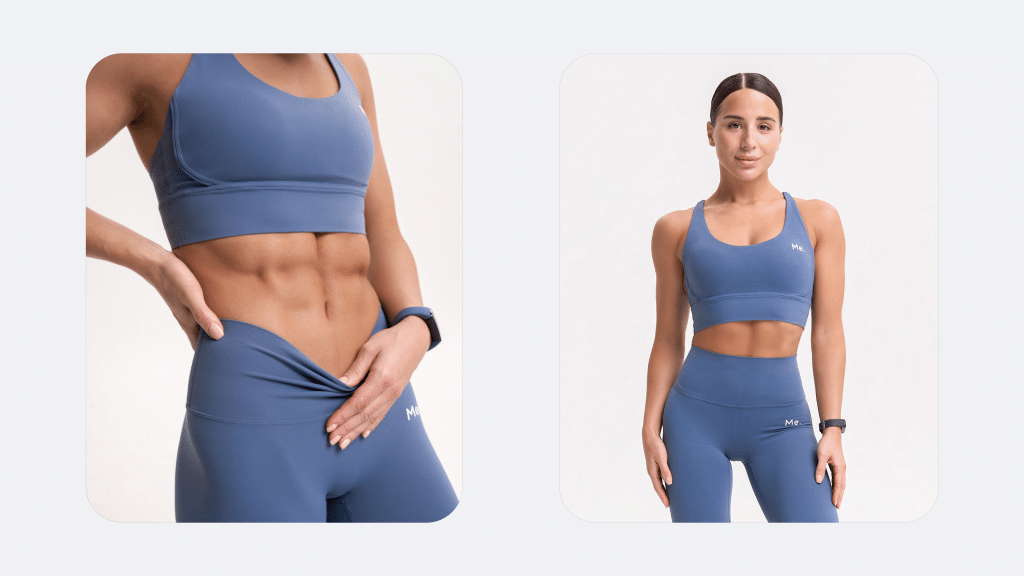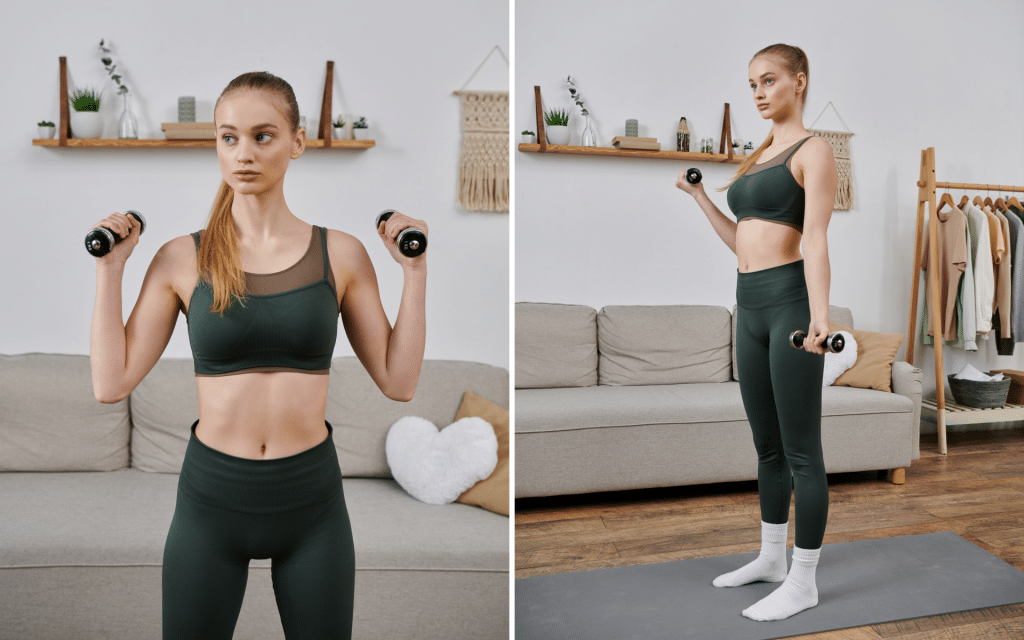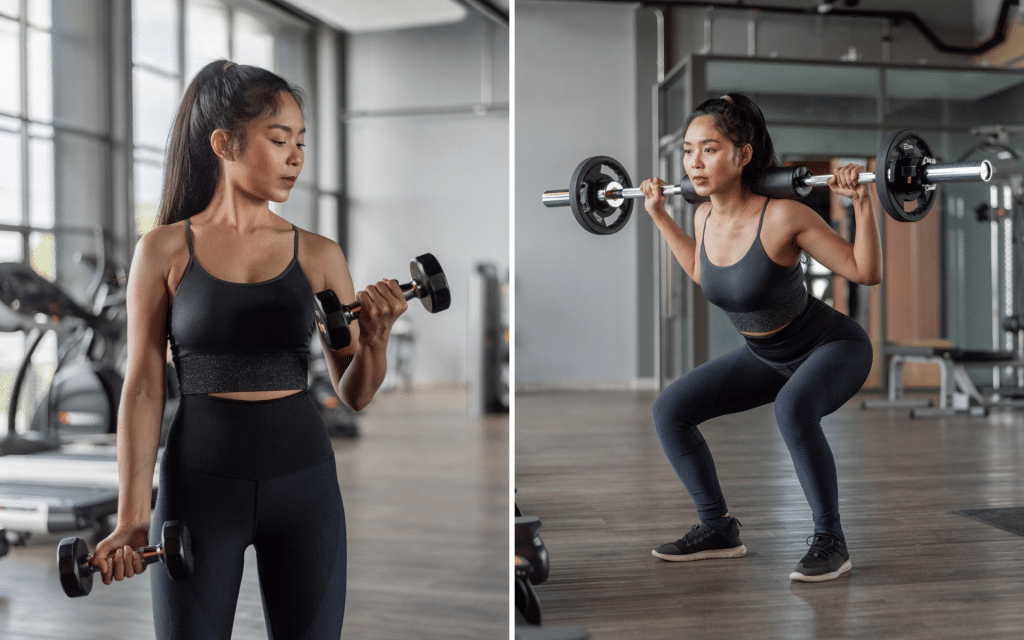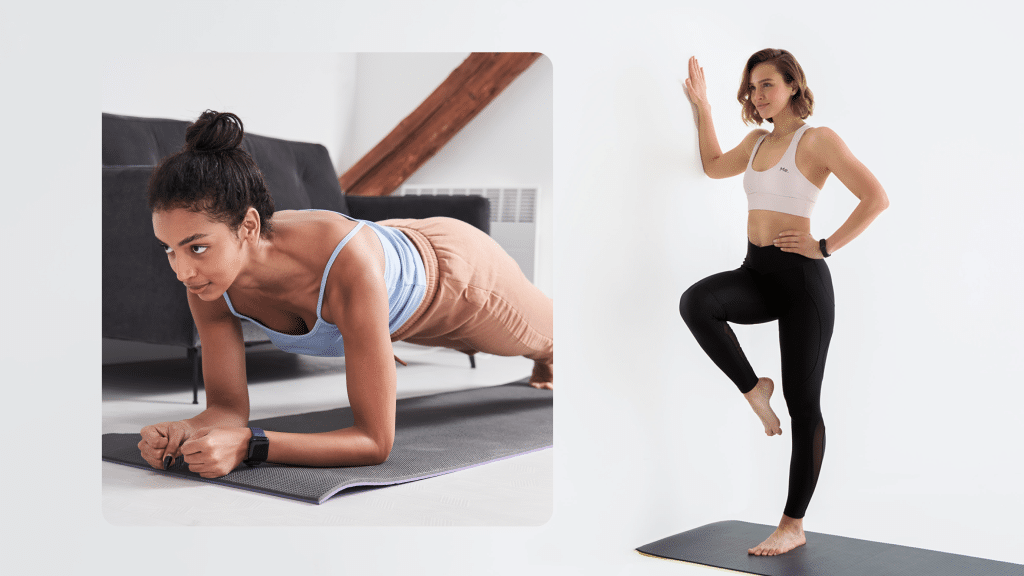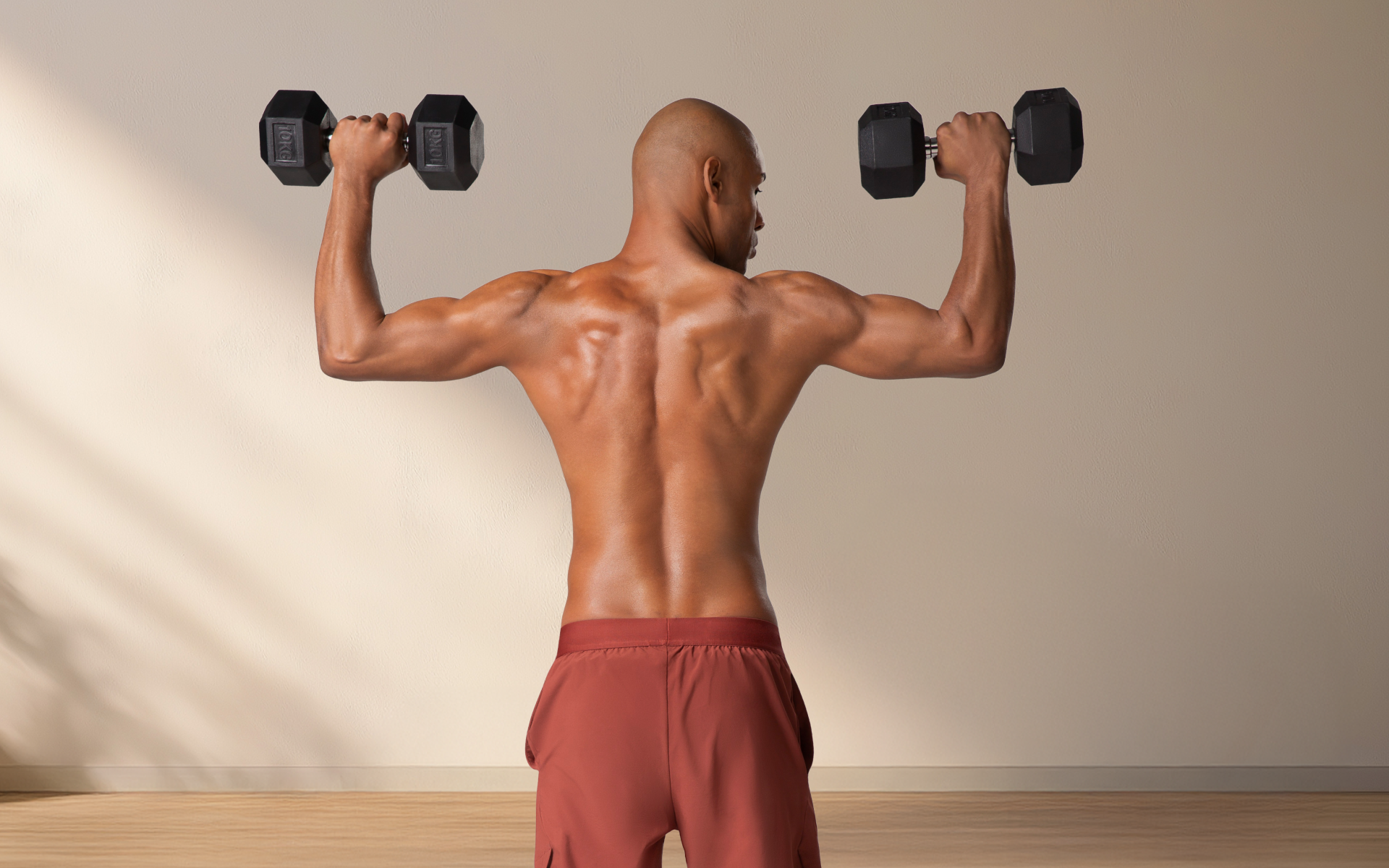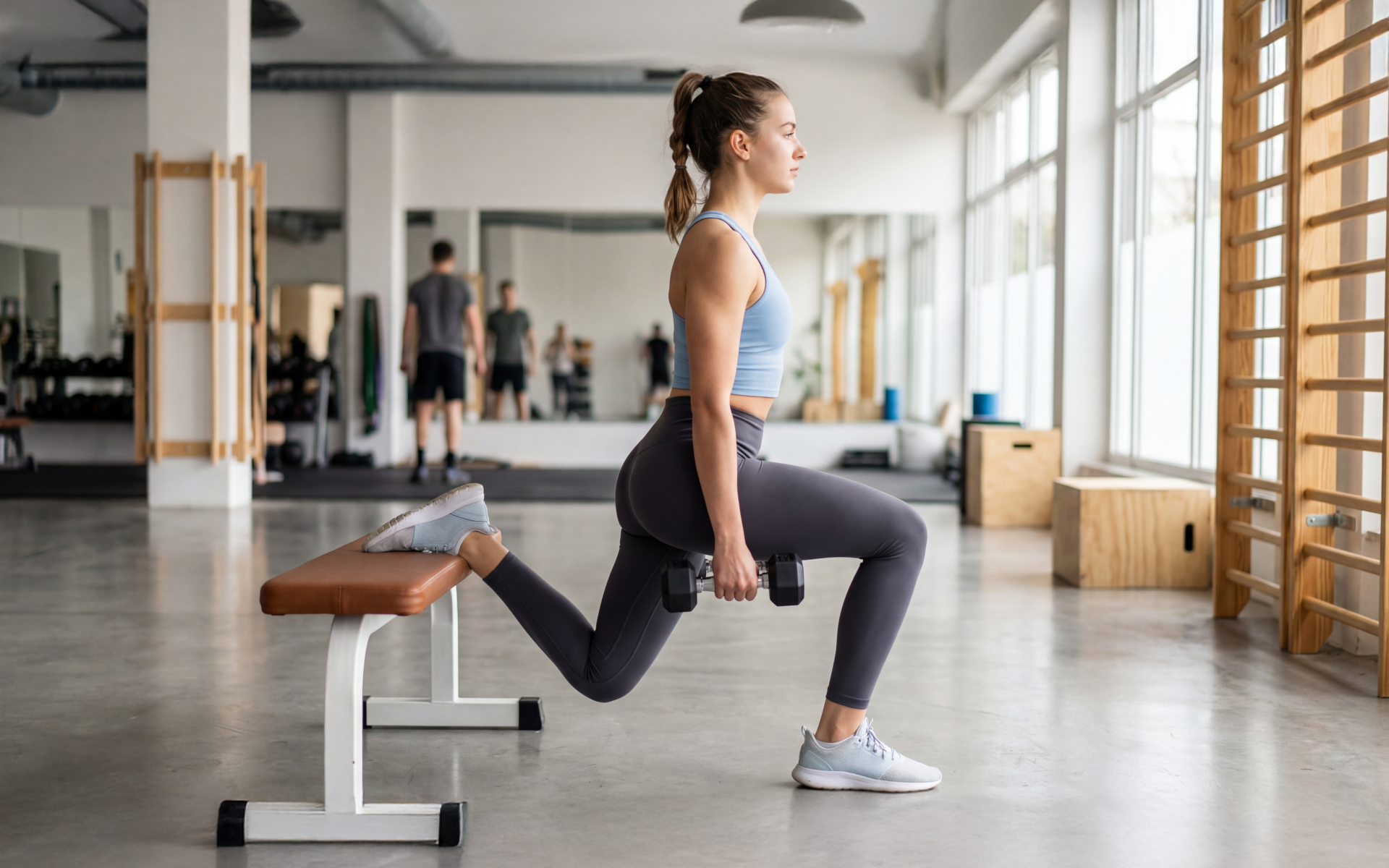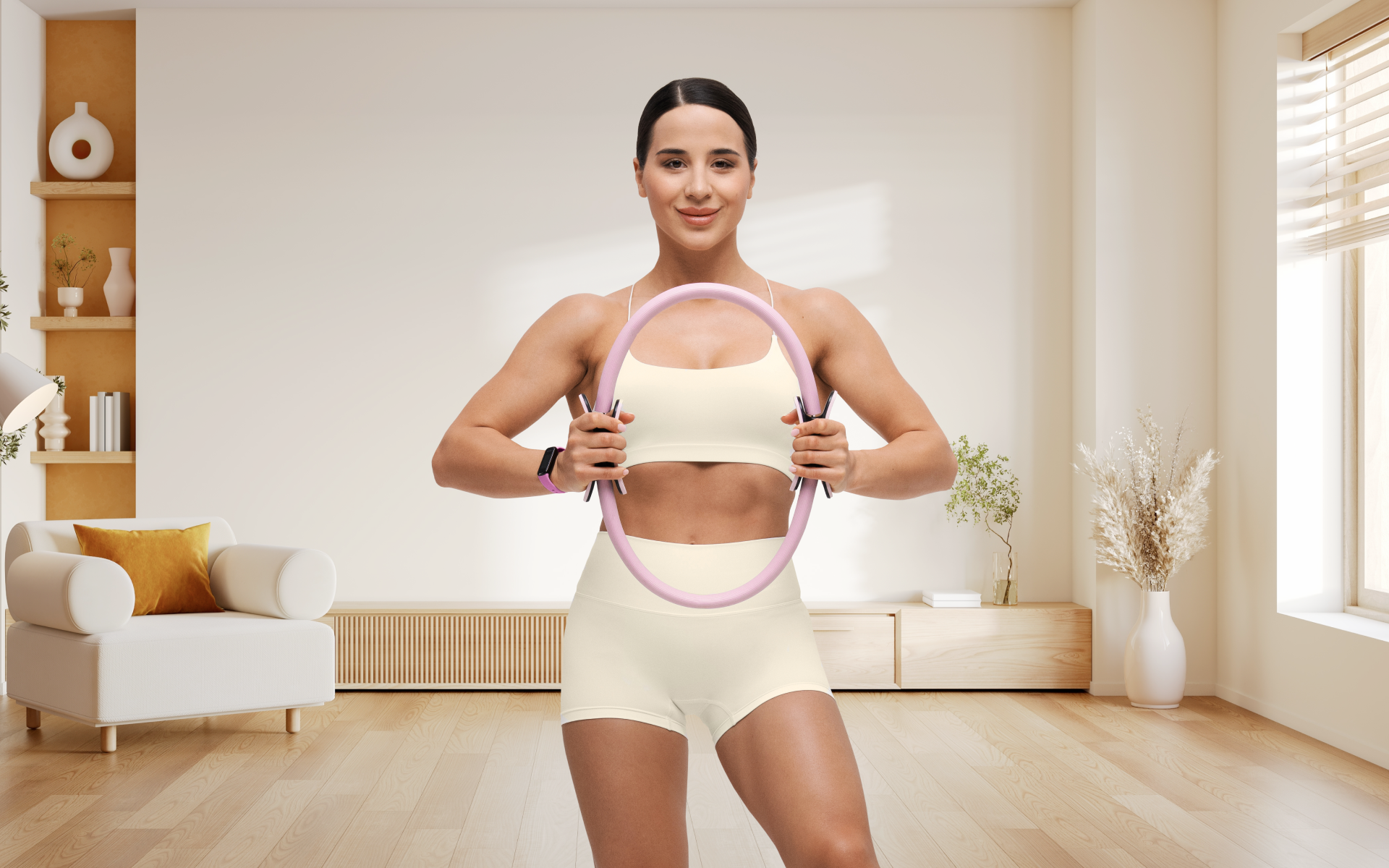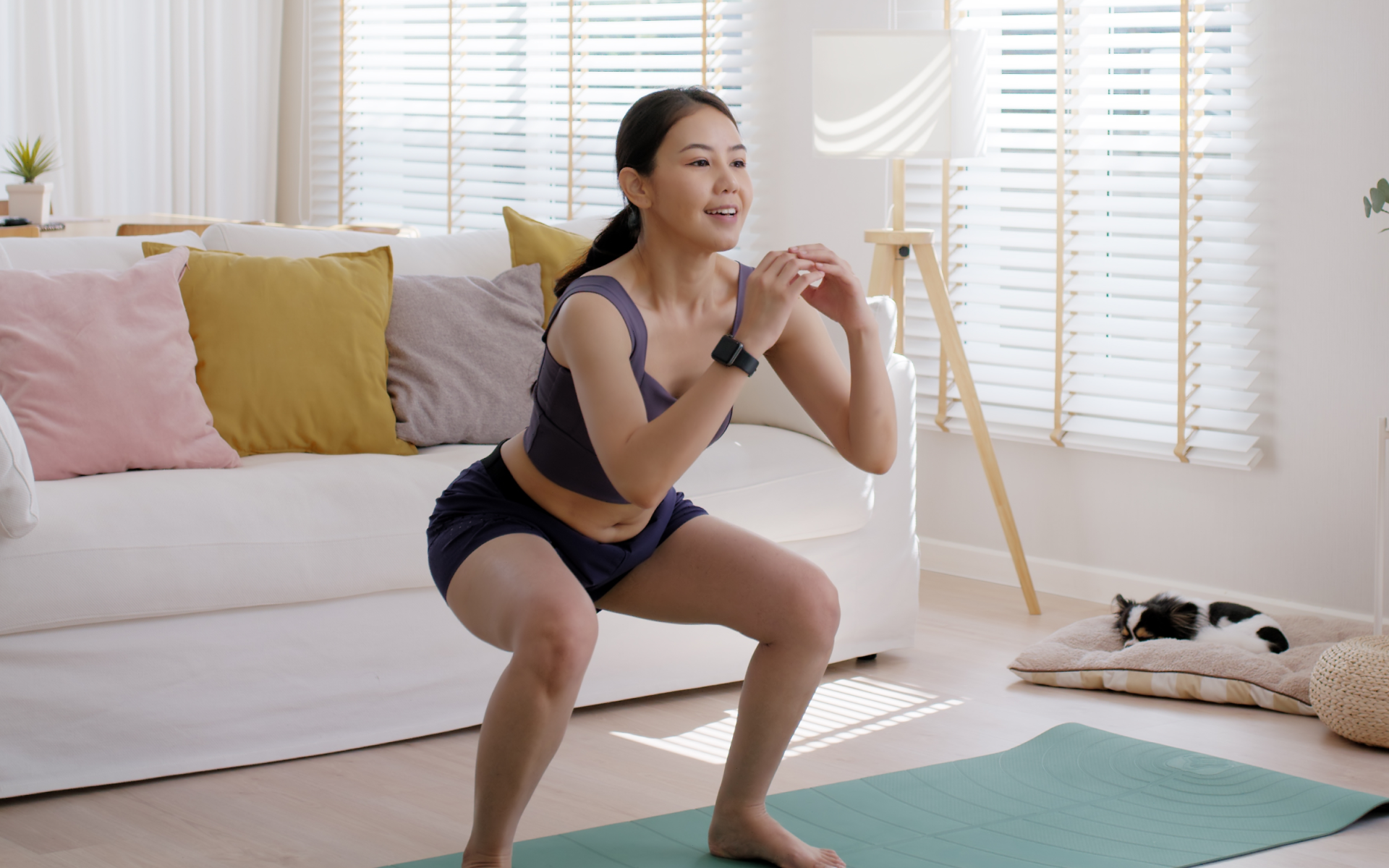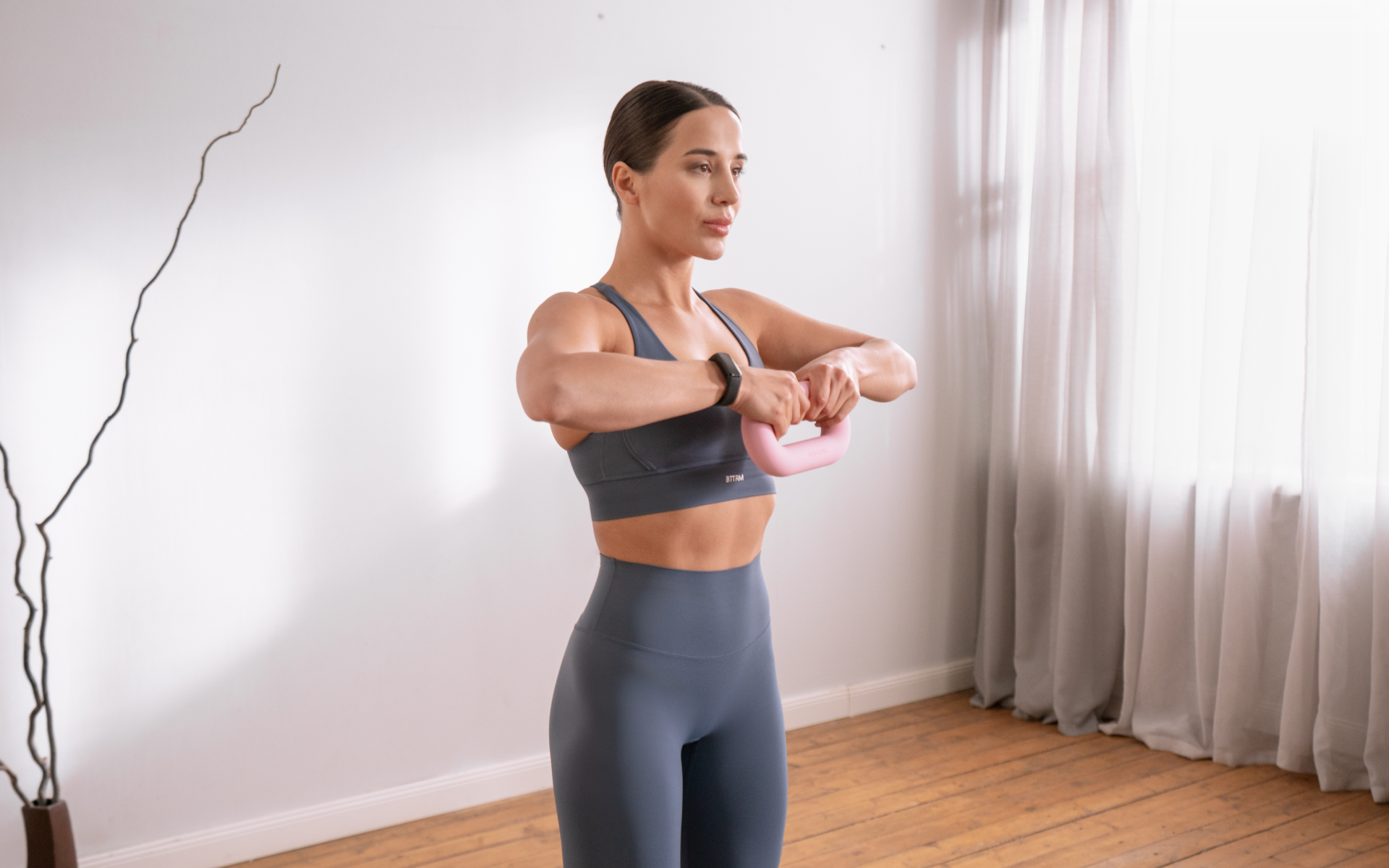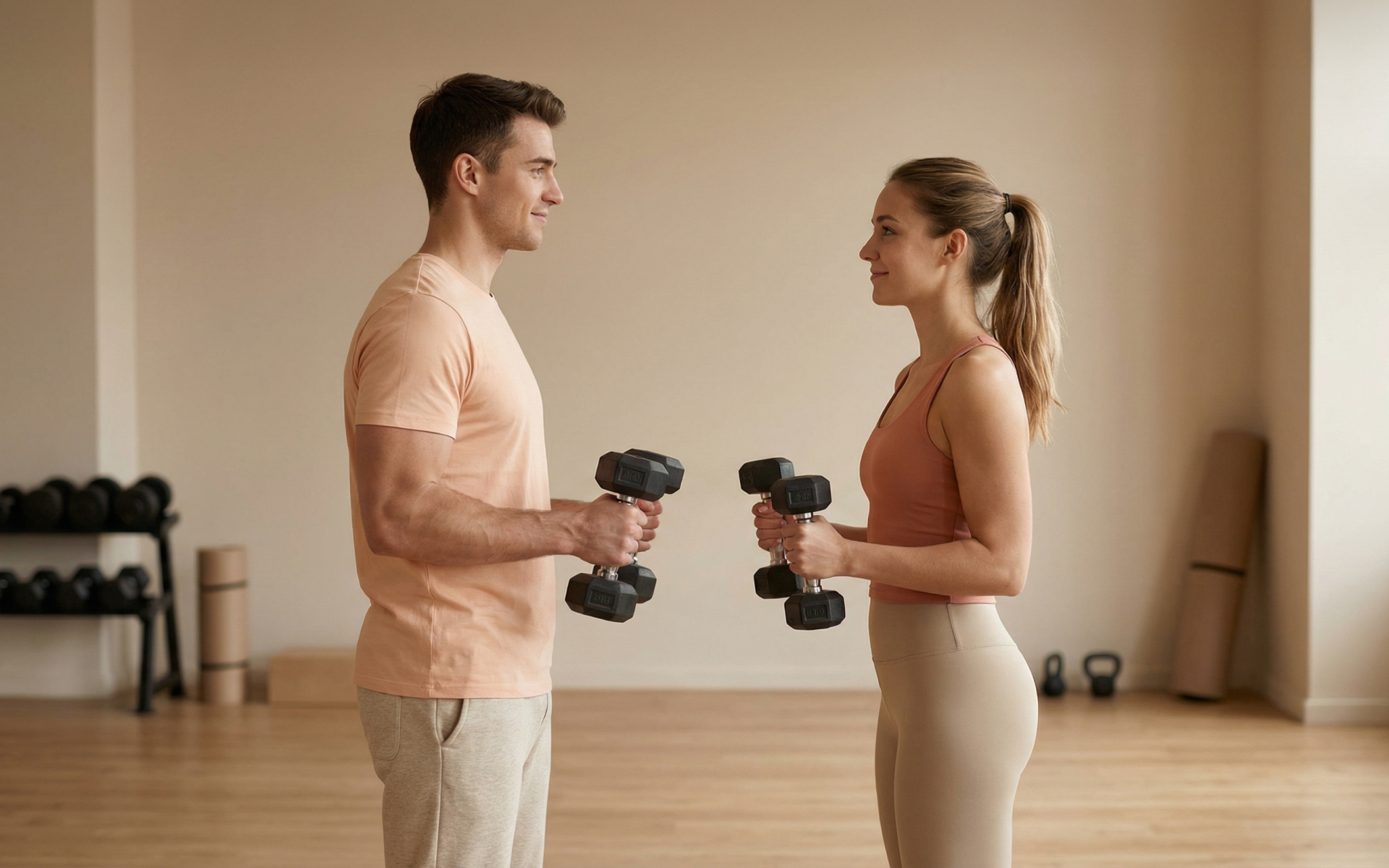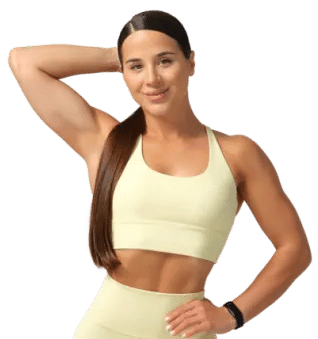If the idea of weightlifting feels intimidating or maybe even off-limits, you’re not alone. For years, myths about women and lifting weights have held many back.
Concerns like “Will I get bulky?” or “Is it safe for me to lift heavy?” are common but rooted in misconceptions. The truth? Weightlifting is one of the most effective, empowering, and health-boosting forms of exercise women can do.
Research has confirmed this. Regular resistance training helps women build strength, improve bone density, and develop a leaner, more sculpted physique (1, 2 ). It even supports mental health in the same way other forms of exercise do (3).
In this guide, we’ll explore the benefits of weightlifting for beginners and provide an overview of some key exercises to help you get started. We’ll also share a sample workout routine that you can follow to start reaping the benefits of weightlifting right away.
Is Weightlifting Good for Women?
Weightlifting is good for women’s bodies and minds:
- It Builds Strength Without Bulking Up
One of the biggest worries for many women is the idea of gaining “too much muscle”. However, here’s the reality – women’s bodies aren’t designed to bulk up easily. Hormones play a key role in muscle development, and testosterone, which promotes significant muscle growth, is much lower in women than men (4).
Weightlifting helps women develop strength and improve muscle tone instead of excessive muscle size. This means you’ll feel stronger, move better, and see a leaner, more defined look over time. Strength training supports everyday activities too. Lifting groceries, walking up stairs, or chasing after kids becomes easier when your muscles are conditioned (5).
- It Improves Bone Health
Bones get stronger when they’re under a manageable amount of stress. Resistance training, such as weightlifting, encourages this. When you lift weights, your bones adapt by becoming denser (1).
This is particularly important for women as they age. Women are more prone to developing osteoporosis (6), a condition where bones lose density and become fragile. Research has shown that weightlifting can help slow or even reverse this process (7). By engaging in resistance-based exercises, you can support your skeletal health for the long term.
- It Boosts Metabolism and Supports Weight Management
Muscle tissue burns more calories than fat tissue, even at rest. When you build muscle through weightlifting, your resting metabolism increases slightly (8). This means your body burns more energy throughout the day, even when you’re not exercising.
Weightlifting can also help maintain a healthy balance of fat and muscle in the body. When paired with a balanced diet, it works well to support weight management goals (9). It’s not a shortcut to weight loss, but it’s an effective tool for improving body composition over time.
- It Enhances Posture and Reduces the Risk of Injury
Developing strong muscles isn’t just about looks – it helps stabilize your joints and spine (10). This can lead to better posture and reduce the strain on your back and other problem areas (5).
Weightlifting strengthens muscles that are often weak from daily habits, such as sitting too long or poor ergonomic setups. A stronger body is also less likely to get injured during physical activities, whether you’re running, playing sports, or just cleaning the house (11).
- It Supports Mental Health
Weightlifting doesn’t just build physical strength, it supports mental well-being too. Exercise in general triggers the release of feel-good chemicals in your brain called endorphins. These can elevate your mood and reduce stress (12).
Weightlifting can be empowering. Setting and achieving performance goals, such as lifting heavier weights over time, boosts confidence and mental resilience. In addition, routine exercise has been proven to reduce symptoms of anxiety and depression.
When it comes to weight loss, progress is made by inches, not miles, so it’s much harder to track and a lot easier to give up. The BetterMe: Health Coaching app is your personal trainer, nutritionist, and support system all in one. Start using our app to stay on track and hold yourself accountable!
- It Supports Longevity
Weightlifting contributes to healthier aging. It combats muscle loss, a condition called sarcopenia, which naturally occurs as we grow older. Strong muscles and bones mean better balance and mobility, which makes it easier to stay independent later in life (13).
Studies have suggested that resistance training may even improve lifespan by supporting overall physical health and lowering the risk of chronic diseases such as diabetes and heart disease (14).
- It’s Adaptable for All Fitness Levels
Weightlifting is versatile and can be tailored to suit any fitness level. Beginners don’t need to start with heavy weights or complex routines. Even light dumbbells or bodyweight movements can deliver benefits.
You can customize weightlifting to suit your goals, whether you’re aiming to build strength, improve endurance, or feel healthier overall. It’s all about progressing gradually and listening to your body.
Read more: How Far Should an 80-Year-Old Walk Every Day? A Simple Guide
Can a Female Lose Weight by Lifting Weights?
Yes, a female can lose weight by lifting weights. Weightlifting supports weight loss in several key ways:
1. Burns Calories During the Workout
- Weightlifting itself burns calories (15).
- The intensity and duration of the session will affect how much you burn.
- While it may not burn as many calories as cardio in the same time frame, the benefits stack up afterward.
2. Boosts Post-Workout Calorie Burn
- After lifting weights, your body burns extra calories to recover (16).
- This is known as “excess post-exercise oxygen consumption” or EPOC (17).
- The heavier or more intense your lifting session, the longer this effect lasts.
3. Builds Muscle, Which Boosts Metabolism
- Lifting weights increases lean muscle mass.
- Muscle burns more calories at rest than fat, even when you’re not exercising.
- Over time, this leads to a higher resting metabolic rate (8), which means you burn more calories throughout the day.
4. Preserves Muscle While Losing Fat
- When losing weight, it’s common to lose a mix of fat and muscle.
- Weightlifting helps preserve muscle, even in a calorie deficit (18).
- This is important for maintaining strength and keeping metabolism steady.
5. Improves Body Composition
- Weight loss isn’t just about the scale.
- Lifting weights can help reduce body fat while building muscle, which leads to a “leaner” appearance (9).
- This means you can drop inches and look more toned, regardless of the number on the scale.
6. Supports Consistency in Exercise
- Weightlifting can be enjoyable and empowering.
- Feeling stronger often motivates people to keep showing up.
- Consistency is a major factor in weight loss success.
The Catch?
- Weightlifting alone doesn’t guarantee weight loss.
- Diet plays a key role. If you consume more calories than your body needs, weight loss won’t occur.
- A mix of strength training, proper nutrition, and physical activity gives the best results.
When combined with a balanced diet, lifting weights is a powerful tool for weight loss. It shapes your body, builds lasting strength, and offers benefits beyond just losing pounds. It focuses on long-term health, not just quick fixes.
What Does Weightlifting Do to a Woman’s Body?
Weightlifting has unique effects on women’s bodies that go beyond building strength or losing fat. Research has revealed specific ways it impacts female physiology:
- Improves Hormonal Balance
Weightlifting can positively influence hormones that are critical to women’s health. Studies have shown that regular strength training helps manage cortisol, a stress hormone, which can lead to better stress resilience (19). Some research has suggested that it can improve insulin sensitivity, helping regulate blood sugar levels and reducing the risk of type 2 diabetes (20).
- Supports Better Pelvic Health
Women are more prone to pelvic floor dysfunction, particularly after pregnancy or as they age. Certain weightlifting exercises engage core muscles, including the pelvic floor. This can enhance pelvic stability and reduce the risk of incontinence (21).
- Improves Pre- and Post-Menopausal Health
Weightlifting protects bone density, which becomes important for women who are entering perimenopause or menopause, when their estrogen levels drop. This hormonal shift increases the risk of osteoporosis, but lifting weights has been shown to slow bone loss and promote bone growth (22). Strength training also helps manage menopause-related weight gain by supporting a healthy metabolism and body composition (23).
- Empowers Women During Pregnancy
Research has highlighted the safety and benefits of weightlifting during pregnancy when done with proper guidance. It can strengthen the muscles needed for carrying extra weight and preparing for delivery. Postpartum, weightlifting may accelerate recovery and rebuild core and pelvic strength (24).
- Enhances Cardiovascular Health in Women
While it’s often overlooked, weightlifting significantly benefits heart health for women. Studies have linked it to improved blood pressure and enhanced blood vessel function (25). It’s even associated with reduced risks of cardiovascular disease, the leading cause of death for women globally.
- Helps Women with PCOS
Polycystic ovary syndrome (PCOS) affects many women, often leading to insulin resistance and weight gain. Weightlifting can improve insulin sensitivity, helping the body manage blood sugar more effectively. In addition, strength training boosts energy expenditure, which can help with the management of PCOS symptoms (26).
- Promotes Functional Fitness for Women
Functional fitness means having the strength, stability, and mobility to perform daily tasks. Weightlifting equips women with the ability to carry kids, lift heavy objects, or manage household chores with ease. This is particularly beneficial for women who are balancing numerous physical and mental demands (27).
- Addresses Age-Related Muscle Loss in Women
Women are biologically predisposed to lose muscle at a faster rate as they age (28). Known as sarcopenia, this process can weaken mobility and increase the risk of falls. Strength training mitigates this loss (29), which helps women maintain independence later in life.
- Builds Body Confidence
While physical benefits are often the focus, a unique psychological shift also occurs. Studies have shown that women who incorporate weightlifting into their routines report higher body satisfaction and self-esteem. This is particularly empowering in a society where unrealistic beauty standards often dominate (2).
Read more: What To Eat Before A HIIT Workout According To The Experts
How Should a Woman Start Lifting Weights?
- Set clear goals – Decide if you want to build strength, lose fat, or improve overall fitness to guide your training plan. For example, if you want to build strength, focus on heavier weights with fewer repetitions. If your goal is to lose fat, prioritize a mix of moderate weights and higher repetitions paired with cardio.
- Start light – Use light weights or resistance bands to focus on proper technique and form before progressing.
- Learn the basics – Master fundamental movements such as squats, deadlifts, lunges, and presses, as these target major muscle groups.
- Create a schedule – Aim for 2-3 weightlifting sessions per week, allowing enough rest days for recovery.
- Focus on full-body workouts – Start with full-body routines that cover all major muscle groups to build balanced strength.
- Warm up properly before each workout – Use a 5-10 minute dynamic warm-up to prepare your muscles and joints for lifting.
- Track progress – Keep a journal or use an app to record weight lifted, reps, and sets, and gradually increase them over time.
- Listen to your body – Avoid overdoing it and adjust your workouts if you experience pain or discomfort.
- Seek guidance when needed – Consider hiring a certified trainer or following a reputable beginner’s program for proper guidance and to build confidence.
- Be consistent and patient – Progress takes time, so stick with your plan and celebrate small wins along the way.
What Weightlifting Exercises Are Good for Female Beginners?
For true beginners, focusing on compound exercises is generally recommended. They provide the most benefit for time spent and teach important movement patterns. Start with lighter weights to learn proper form. You can add a few isolation exercises once you feel comfortable.
If you have prior experience with physical activity, you may progress faster than a true beginner.
All weightlifting exercises can be modified to suit female beginners – a mix of compound and isolation exercises work best.
Compound Exercises
Compound exercises work multiple muscle groups at once. These should form the foundation of a beginner’s routine because they maximize muscle engagement.
Examples include squats, deadlifts, bench presses, pull-ups, lunges, and rows.
These moves help build functional strength, improve coordination, and burn more calories since they involve large muscle groups. Research has shown compound exercises to be highly effective for building strength and muscle mass while improving overall fitness (30).
Isolation Exercises
Isolation exercises focus on one muscle group at a time. They’re useful for targeting weaker or smaller muscles. Exercises such as bicep curls, tricep extensions, leg curls, and calf raises are good examples.
While isolation moves have their place, they are often not the primary focus for beginners as they’re less efficient for developing total-body strength.
BetterMe: Health Coaching app helps you achieve your body goals with ease and efficiency by helping to choose proper meal plans and effective workouts. Start using our app and you will see good results in a short time.
Sample Full-Body Beginner Weightlifting Routine for Women
Warm-Up: Start with 5-10 minutes of light cardio (e.g. brisk walking, jogging, or cycling) and dynamic stretches.
1. Bodyweight Squats or Goblet Squats (Lower Body – Quads, Glutes)
- Sets: 3
- Reps: 10-12
- Rest Time: 60 seconds
Use a dumbbell (8-15 lbs) for goblet squats if you’re comfortable with it. Feel free to elevate the heels to help you get lower as you squat down.
2. Dumbbell Romanian Deadlift (Lower Body – Hamstrings, Glutes)
- Sets: 3
- Reps: 10-12
- Rest Time: 60 seconds
Use light dumbbells (8-15 lbs) to start. Focus on a slight bend in the knees and hinging at the hips.
3. Dumbbell Bench Press (Upper Body – Chest, Shoulders, Triceps)
- Sets: 3
- Reps: 8-10
- Rest Time: 90 seconds
Start with dumbbells (5-10 lbs) and use controlled movement throughout.
4. Bent-Over Dumbbell Rows (Upper Body – Back, Biceps)
- Sets: 3
- Reps: 10-12
- Rest Time: 90 seconds
Use dumbbells (8-15 lbs) and maintain a neutral spine throughout the movement.
5. Standing Overhead Dumbbell Press (Upper Body – Shoulders, Triceps)
- Sets: 3
- Reps: 10
- Rest Time: 60 seconds
Start with light dumbbells (5-10 lbs), ensuring smooth and steady pressing.
6. Plank (Core – Abs, Stability)
- Sets: 3
- Duration: 20-30 seconds
- Rest Time: 30 seconds
For a beginner-friendly variation, place your knees on the ground and focus on squeezing your core.
Cool-Down: End with 5-10 minutes of static stretches, targeting the legs, back, shoulders, and chest.
This updated routine ensures a balanced focus on both upper- and lower-body muscle groups, which makes it ideal for beginners who are building strength and confidence! Adjust the weights and rest times as required.
What Weights Are Good for Female Beginners?
Start with a weight that feels challenging but not overwhelming. You should be able to complete 8-12 repetitions with good form. If it feels too easy, add a little more weight. If you struggle to finish even a few reps, it’s too heavy. Resistance bands or light dumbbells (5-10 lbs) are great starting points, but even just using your body weight can work well too.
You’ll know it’s time to progress when the last few reps of your set feel too easy. Gradually increase the weight by 5-10% to keep your muscles challenged. Common signs of readiness include maintaining proper form, completing reps easily, and no longer feeling fatigued after a set.
How Long Does It Take for a Woman to See Results from Weightlifting?
Most women start to notice improved strength and energy levels within a few weeks. Visible muscle definition may take 6-8 weeks, depending on factors such as diet, workout intensity, and body type.
Muscle growth, or hypertrophy, becomes noticeable after 2-3 months of regular training (31). However, each person’s timeline can vary. Sticking to a routine, getting enough protein, and allowing proper recovery are all essential if you are to see progress.
Lifting weights can slightly impact hormone levels, such as increasing testosterone and growth hormones, but not enough to cause masculinization. These changes help with muscle growth and fat loss, which support overall health. Not gaining muscle despite lifting could be due to insufficient protein intake, lack of progressive overload, or inadequate rest and recovery. Hormonal differences in women can also make muscle growth slower than in men. Fifteen minutes is better than nothing, but typically not enough to achieve significant muscle or strength goals. Aim for at least 30-40 minutes per session to adequately train all the major muscle groups. Yes, lifting weights three days a week is enough for beginners. It allows proper recovery while building strength and muscle, particularly if your routine includes full-body exercises.Frequently Asked Questions
Does lifting weights affect women’s hormones?
Why can I lift heavy weights but not gain muscle?
Is 15 minutes of weight training enough?
Is lifting weights 3 days a week enough?
The Bottom Line
Weightlifting is a powerful tool for women’s health and should be incorporated into their fitness routines. It offers unique physiological benefits that go beyond building strength and losing fat, such as improving hormonal balance, supporting pelvic health, and promoting functional fitness. With proper guidance and consistency, weightlifting can empower women both physically and mentally.
DISCLAIMER:
This article is intended for general informational purposes only and does not serve to address individual circumstances. It is not a substitute for professional advice or help and should not be relied on for making any kind of decision-making. Any action taken as a direct or indirect result of the information in this article is entirely at your own risk and is your sole responsibility.
BetterMe, its content staff, and its medical advisors accept no responsibility for inaccuracies, errors, misstatements, inconsistencies, or omissions and specifically disclaim any liability, loss or risk, personal, professional or otherwise, which may be incurred as a consequence, directly or indirectly, of the use and/or application of any content.
You should always seek the advice of your physician or other qualified health provider with any questions you may have regarding a medical condition or your specific situation. Never disregard professional medical advice or delay seeking it because of BetterMe content. If you suspect or think you may have a medical emergency, call your doctor.
SOURCES:
- Effects of Resistance Exercise on Bone Health (2018, nih.gov)
- Strength Training Improves Body Image and Physical Activity Behaviors Among Midlife and Older Rural Women (2015, nih.gov)
- The anxiolytic effects of resistance exercise (2014, frontiersin.org)
- Circulating Testosterone as the Hormonal Basis of Sex Differences in Athletic Performance (2018, academic.oup.com)
- Resistance training – health benefits (2022, betterhealth.vic.gov.au)
- Osteoporosis in Females (2023, nih.gov)
- The Role of Strength Training in Preventing Osteoporosis: Functional Exercises and Evidence-Based Benefits (n.d., orthopt.org)
- Increasing muscle mass to improve metabolism (2013, nih.gov)
- Resistance training effectiveness on body composition and body weight outcomes in individuals with overweight and obesity across the lifespan: A systematic review and meta‐analysis (2024, nih.gov)
- Musculoskeletal system (2023, kenhub.com)
- Resistance training for health and performance (2022, nih.gov)
- The Effects of Acute Exercise on Mood, Cognition, Neurophysiology, and Neurochemical Pathways: A Review (2017, nih.gov)
- What are the health benefits of muscle and bone strengthening and balance activities across life stages and specific health outcomes? (2018, nih.gov)
- Muscle-strengthening activities are associated with lower risk and mortality in major non-communicable diseases: a systematic review and meta-analysis of cohort studies (2024, bjsm.bmj.com)
- Effect of exercise training on weight loss, body composition changes, and weight maintenance in adults with overweight or obesity: An overview of 12 systematic reviews and 149 studies (2021, nih.gov)
- Minimal resistance training improves daily energy expenditure and fat oxidation (2010, nih.gov)
- EPOC Comparison Between Resistance Training and High-Intensity Interval Training in Aerobically Fit Women (2021, nih.gov)
- Preserving Healthy Muscle during Weight Loss (2017, nih.gov)
- Regular exercise is associated with emotional resilience to acute stress in healthy adults (2014, frontiersin.org)
- Strength Training and the Risk of Type 2 Diabetes and Cardiovascular Disease (2017, journals.lww.com)
- Is Physical Activity Good or Bad for the Female Pelvic Floor? A Narrative Review (2019, springer.com)
- Effect of Weighted Exercises on Bone Mineral Density in Post Menopausal Women A Systematic Review (2007, journals.lww.com)
- Resistance training alters body composition in middle-aged women depending on menopause – A 20-week control trial (2023, bmcwomenshealth.biomedcentral.com)
- Benefits of Resistance Training During Pregnancy for Maternal and Fetal Health: A Brief Overview (2024, nih.gov)
- Sex Differences in Association of Physical Activity With All-Cause and Cardiovascular Mortality (2024, jacc.org)
- Can resistance training improve the symptoms of polycystic ovary syndrome? (2018, bmjopensem.bmj.com)
- Strength Training for Women as a Vehicle for Health Promotion at Work (2017, nih.gov)
- Sex Differences in Inflammation and Muscle Wasting in Aging and Disease (2023, mdpi.com)
- Role of exercise in age-related sarcopenia (2018, nih.gov)
- Resistance Training with Single vs. Multi-joint Exercises at Equal Total Load Volume: Effects on Body Composition, Cardiorespiratory Fitness, and Muscle Strength (2017, frontiersin.org)
- Adaptations to Endurance and Strength Training (2018, nih.gov)
